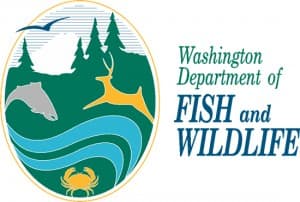Washington State, Tulalip Tribes Reach Agreement on Joint Salmon Hatchery Operations
OutdoorHub 08.21.12

The Washington Department of Fish and Wildlife (WDFW) and the Tulalip Tribes have announced a new agreement that brings hatchery operations in the Snohomish River Basin into alignment with ongoing efforts to recover wild chinook salmon in Puget Sound.
Under one provision of that agreement, WDFW will increase the number of yearling summer chinook salmon released from the state’s Wallace River Hatchery near Sultan to 500,000 fish, up from 250,000 in previous years.
The offspring from those fish will help support future production at Wallace River and the tribes’ nearby Bernie Kai Kai Gobin Salmon Hatchery, while also bolstering area fisheries.
In addition, the agreement provides for the continued transfer of millions of summer chinook eggs to the Tulalip Tribes’ hatchery, and establishes protocols for ensuring the genetic integrity of fish raised at both hatcheries.
WDFW Director Phil Anderson called the agreement, approved last week, a “model of state-tribal cooperation” in the joint effort to manage one of the state’s most prized natural resources.
“This agreement will help to set the future direction of fish hatcheries in our state,” Anderson said. “By linking our facilities through a joint operating plan, we can produce more fish for harvest, while simultaneously working to rebuild the basin’s wild runs.”
Mel Sheldon, Chairman of the Tulalip Tribes, also spoke about significance of the agreement to the future of fisheries co-management.
“We have acknowledged for some time now that we are all in this together and must therefore find solutions together,” Sheldon said. “This agreement offers a model of how the Tribes and the State of Washington can work together to recover our great common resource.”
Heather Bartlett, WDFW’s statewide hatchery manager, said the partnership contributes to salmon recovery by committing both parties to using chinook salmon eggs taken from local stocks. That practice reduces risks to wild chinook salmon in Puget Sound listed as “threatened” under the federal Endangered Species Act in 1999, she said.
Under the new memorandum of understanding (MOU), WDFW agreed to provide the Tulalip Tribes’ rearing facility with 2.4 million chinook eggs from the Wallace River Hatchery each year to produce fish for harvest by tribal and non-tribal fisheries. In return, the tribes agreed to make exclusive use of chinook eggs from the state hatchery so long as they are available in quantities specified in the MOU.
“At Wallace River, we breed chinook salmon from a combination of wild fish and hatchery fish that have been allowed to spawn naturally,” Bartlett said. “As a result, we’re moving closer and closer to restoring the genetic integrity of the basin’s salmon runs with each generation of fish we produce.”
That approach is consistent with current scientific recommendations and with other aspects of Washington’s salmon recovery effort, including habitat restoration and selective fisheries, she said.
Together, the two partnering hatcheries are expected to release 2.7 million sub-yearling chinook – plus 500,000 yearlings – into the Snohomish Basin each year, contributing to tribal and non-tribal fisheries in Puget Sound and the Pacific Coast.
Other provisions of the agreement:
- Establish egg-take goals for coho salmon returning to the Wallace River Hatchery, and provide guidelines for sharing them with the tribal hatchery.
- Requires that all chinook and coho salmon produced at Tulalip’s Bernie Kai-Kai Gobin and WDFW’s Wallace River facilities be marked by clipping their adipose fins. This procedure, which is currently used at both facilities along with other marking techniques, identifies these salmon as hatchery fish in fisheries and on the spawning grounds.
- Set escapement goals for chinook and coho salmon returning to the Wallace River Hatchery, for use by fishery managers in regulating fishing seasons.
There is no termination date for the agreement, but either party has the opportunity to rescind it once a year. Bartlett noted that the new MOU builds on a previous joint hatchery agreement with the Tulalip Tribes that would have lapsed in 2013.
“We learned a lot working together in recent years,” Bartlett said. “This agreement takes the next step forward in our partnership.”

